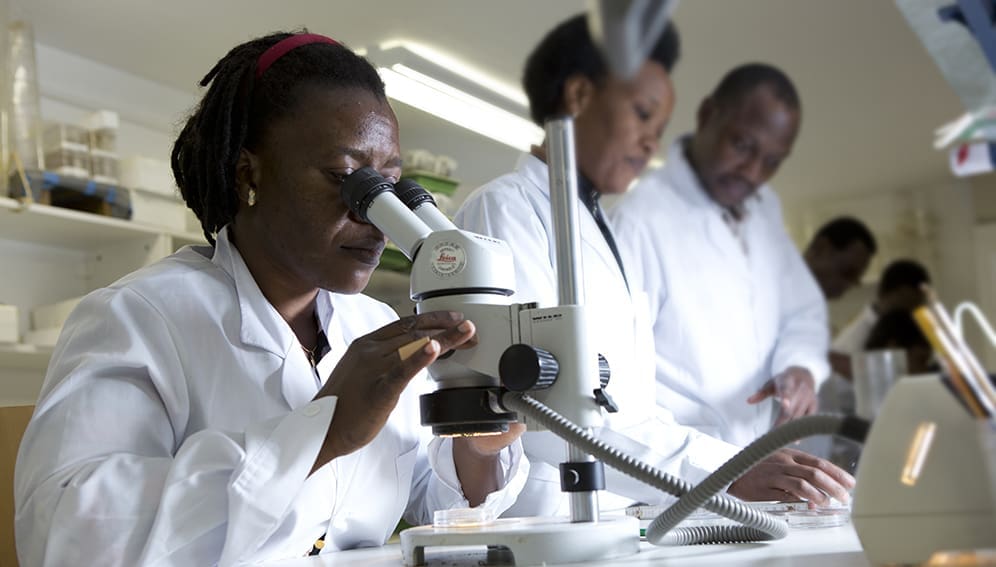You are here: Home / Practical guides /How to report scientific findings

Image: stock photo
31/05/19
Script Practical Guide
How to report scientific findings
Speed read
- Press releases may make things easy but are prone to exaggeration
- Read the research paper to get details on context, method and potential impact
- Then you can report accurately and responsibly — and with a splash of colour
By: Juan Casasbuenas and Bernard Appiah
Start with the press release
Read the research paper
Enrich the story
Best Practices
Final checklist
Read the Research Paper:You don’t need to read the paper from beginning to end, but instead look out for specific things in each section | |
| Title and abstract | These can be quite technical but will provide you with the first hint of what the researchers found, the scope of the work and so on. The last sentence of the abstract often states the main research finding. |
| Introduction | The introduction usually puts the research into context, giving references to previous literature and other important players in the field who might be useful to contact. It begins to answer the ‘‘so what? ’’ It will also tell you what is already known in the field and therefore the gap the research addresses. |
| Methods | This section can be challenging to read, but here you can answer questions about the way the work was carried out. Was the drug tested on mice or humans? How many? Was the new device tested in the field or in controlled conditions? Does the technique use existing methods or an improved version? Is there something about the technique that raises questions for you? |
| Results | Good papers will summarise results in reasonably readable figures and tables and lay out the finding in each experiment. It is possible you won’t fully grasp the statistics employed but pay attention to words such as ‘‘significant’’ and ‘‘non-significant‘‘. |
| Discussion | This is where the authors will explain implications of the findings and speculate on where the work is heading. They will also identify further work needed to answer the remaining questions. The limitations of the work will be highlighted here, as well as useful references that the authors use to justify their conclusions. |
| Author list | In theory, this should include everyone who was involved in the research and willing to take responsibility for it. Usually, the earlier names in the list were highly involved, while the last name is the person in charge of the research group. The former can give you specific commentary on the work itself, while the latter is likely to have more experience of talking to journalists and putting the work into context. This can vary across disciplines though, for example alphabetical order is used in mathematics or in large physics research groups. |
| Where was the research carried out? | The fact that a particular city or country was involved in the research can be newsworthy in itself and might help you choose which outlet to pitch to. For example, SciDev.Net is interested in research carried out in developing countries. |
| Submission date | Note this down and compare it to the publication date. How much time has passed? The longer the time, the more likely there have been new developments that you can ask the authors about. |
| Conflicts of interest | Authors have to declare where their funding came from, and whether they have any competing interests. It’s worth a quick look into these declared interests. For example, an author might have a financial link to a company that sponsored or will benefit from the work. |
Best Practice:Some of these tips have been touched on already, but are worthy of their own section. Following this advice will help ensure you report fairly and transparently | |
| Fact-check with an expert | If possible, ask someone you trust to scan the study and tell you what they think. For example, are the paper’s conclusions hyperbolic? |
| Determine size and nature | If the study was tested on subjects, are the findings based on human trials? Or mice? Or in a test tube? How large were the sample sizes? Essentially, how directly can we apply the findings to the ultimate objective of the work? |
| Don’t report causality without evidence | Sometimes scientists will report associations or links between two things, but might not present conclusive evidence for causality. Researchers are usually careful about the language they use in this context, and the discussion section should shed light on this. |
Assess the stage of the research | Sometimes exciting research can be decades away from impacting upon our lives. This doesn’t make it less exciting, but you should find out how close research is to having real-world applications. Is it a well-established field? Or a pioneering study? |
| Be accurate about the findings | If something is not a cure, don’t report it as such. If a technological innovation hasn’t been tested in the real world, then don’t present it in this way. |
| Suggest headlines | You might not have control over the headlines, but you can suggest some that accurately reflect the research. |
| Don’t extrapolate | A journal article’s discussion section might speculate on where the work is heading. It’ll be tempting to get excited about this, but be clear about what is known and what is not. |
| Deal carefully with risk and uncertainty | How much certainty is there over the results? How does it compare to the wider body of evidence? To what degree are scientists sure about the findings? Present risk and uncertainty using manageable numbers (like one in 100) and everyday examples (for example, ‘‘as likely as being struck by lightning’’). |
| Some of these tips are adapted from the Science Media Centre’s ‘10 best practice guidelines for reporting science & health stories’. | |
Bernard Appiah is regional sub-editor for the Sub-Saharan Africa English edition. @bernappiah
Juan Casasbuenas is a former SciDev.Net training coordinator. @jdcasasbuenas

